Introduction
Before last year’s introduction of the Canon EF200-400mm f4L IS USM x1.4 Extender this model was the only telephoto zoom in the range with a focal length over 300mm. Introduced in 1998 this L-series lens was made to a high specification that still stands today. As well as a two-stop image stabilizer the EF100-400mm f4.5-5.6L IS USM has a fast, quiet ultrasonic AF motor. Like all Canon L-series lenses, it’s made to a high standard but it doesn’t feature environmental sealing – though just how effective that is in zoom is It also has a push-pull zoom mechanism (with a collar for adjusting resistance), which although once common is unusual today.
The optical construction is impressive, consisting of 17 elements arranged in 14 groups and includes fluorite and super low-dispersion glass elements to reduce chromatic aberration. It has a ‘floating’ system for improved image quality and close range, and a minimum focusing distance of 5.9 ft. (1.8m) and a maximum magnification of 1:5. With a 77mm filter attachment thread and measuring 7.4 x 3.6” (189 x 92mm) it’s compact (at least at 100mm), and at 48 oz (1,380g) it’s of reasonable weight (in fact slightly lighter than the firm’s EF70-200mm f2.8 IS II USM).
Please note that we’ve yet to complete our assessment of the promising new SP 150-600mm f5-6.3 Di VC USD from Tamron, which was unveiled in November last year at $1,999 (though already available at around $999). However, our review will be posted soon.
With a DxOMark lens score of 16 points the Canon EF100-400mm f4.5-5.6L IS USM is a very good performer given that zooms usually can’t quite match primes at the equivalent focal length. This lens has good sharpness throughout the zoom range, and is one of the few that’s actually better at the longer end of the zoom range, at least in the centers. Sharpness suffers at the periphery at most focal lengths and aperture settings, but it’s a decent performer overall. Chromatic aberration is well controlled, as are both distortion and vignetting, though transmission could be better (it’s measured as 5.4-6.7TStop).
Best performing telephoto zooms on the Canon EOS 5D Mk III:
 |
 |
 |
 |
| Canon EF 200-400mm f/4L IS USM Extender 1.4x | 11800 | 24 | 19 |
| Canon EF 200-400mm f/4L IS USM Extender 1.4x ON | 11800 | 17 | 14 |
| Sigma 50-500mm F4.5-6.3 APO DG OS HSM Canon | 1659 | 17 | 14 |
| Sigma 120-400mm F4.5-5.6 DG APO OS HSM Canon | 999 | 17 | 13 |
| Canon EF 100-400mm f/4.5-5.6L IS USM | 1620 | 16 | 13 |
| Sigma 150-500mm F5-6.3 APO DG OS HSM Canon | 1069 | 16 | 13 |
| Sigma 50-500mm F4-6.3 APO EX DG HSM Canon | 1389 | 14 | 11 |
Canon EF 100-400mm f4.5-5.6L IS USM mounted on Canon EOS 6D: Good image quality
Compared against the Canon EF70-300mm f4-5.6L, the older lens fares quite well. At first blush that’s somewhat surprising given the newer similarly priced lens lacks a tripod mount not to mention the extra range. However, the EF100-400mm f4.5-5.6L can’t match the peak sharpness (though that’s perhaps unfair as that’s actually at the shorter end of the range), neither can it match the newer model’s uniformity. Even at 300mm it doesn’t have the same sharpness as the EF70-300 at the periphery and corners. Distortion is a little higher on the EF70-300mm and it has slightly heavier vignetting at 300mm. However, transmission is an impressive 4.6TStop at 70mm, albeit dropping to a similar 6.4TStop at 300mm.
Canon EF 100-400mm f4-5.6L IS USM vs. Sigma 50-500mm f4-6.3 APO EX DG HSM vs. Sigma 50-500mm f4.5-6.3 APO DG OS HSM mounted on Canon EOS 5D Mk III: Competitive performance overall
Sigma’s attractively priced 50-500mm was upgraded in 2010 with a redesigned optical construction and four-stop stabilization. As you might expect, a zoom with a 500mm maximum focal length will be popular with wildlife photographers, but in reality it’s a little shorter than this.
We’ve included the older discontinued model and the new OS version in our comparison, and the Canon sits between the two in terms of IQ.
While the older Sigma model wasn’t as sharp as the Canon, the price was very competitive. The new version carries quite a premium, and while very sharp at the shorter end, sharpness degrades between 300-400mm at the maximum aperture.
Things improve when stopped down to f8 but that’s often not really practical. At 500mm the Sigma regains some sharpness centrally wide open but it’s not as sharp as the Canon at 400mm.
Canon EF 100-400mm f4-5.6L IS USM vs. Canon EF 200-400mm f4L IS USM Extender 1.4x mounted on Canon EOS 5D Mk III: Eclipsed by pricier offering
At around $11,800, Canon’s new EF200-400mm f4L IS USM extender 1.4x is likely out reach for most people and is several thousand dollars more expensive then the equivalent Nikon offering, but its performance is outstanding. Disregarding performance with the extender in place which understandably degrades IQ (not shown in the above), sharpness is excellent from the center right out to corners of the frame, at all focal lengths and aperture settings.
That also includes the initial aperture where it’s both sharper in the centers and edges than the smaller and more portable EF100-400mm. Chromatic aberration is very low particular at the longer focal lengths where some is evident with the smaller model towards the longer end.
Without doubt this lens is a popular model and it’s not difficult to see why. It has pretty good image quality throughout the range – though sharpness is confined to a relatively small area centrally at the initial aperture. Edge performance improves when stopped down but it’s not ideal where shooting in available light is usually the only option.
A new updated version is long overdue but when it arrives will likely have improved full aperture performance and a ticket to match, but for the time being this lens is competitively priced and remains a solid choice.


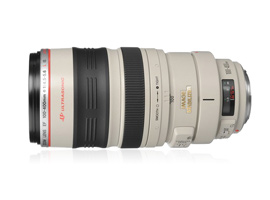


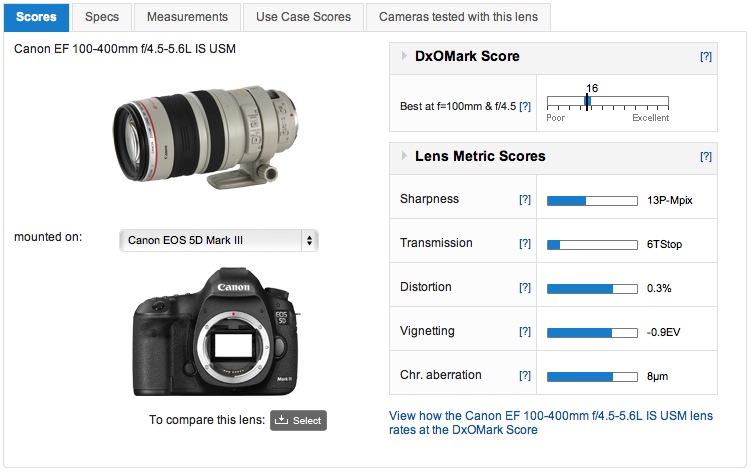
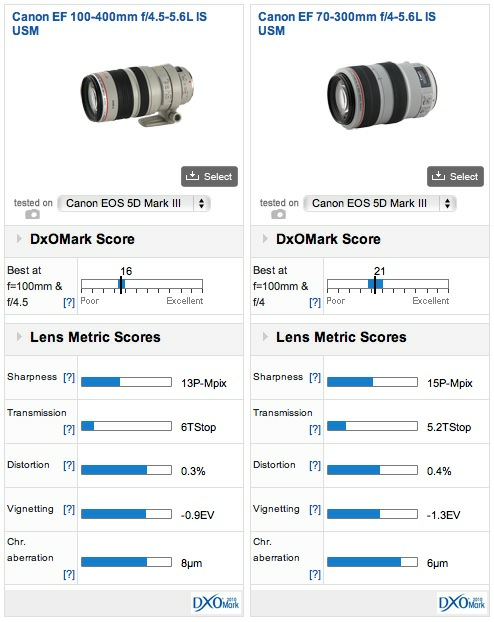
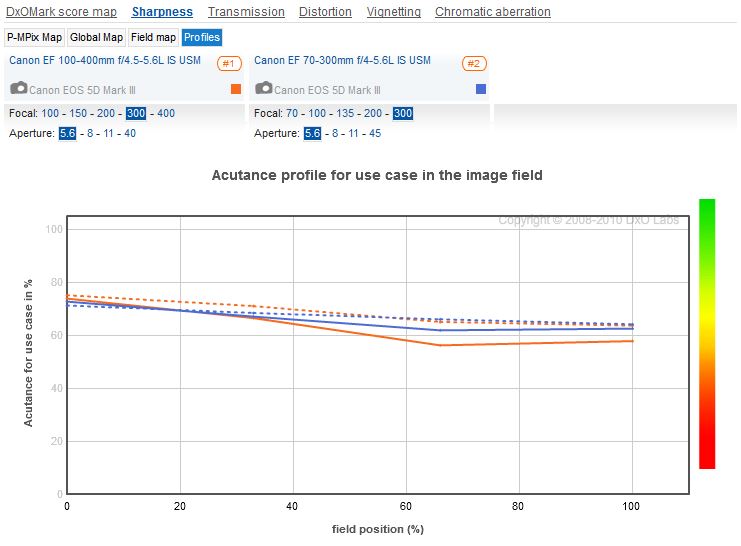
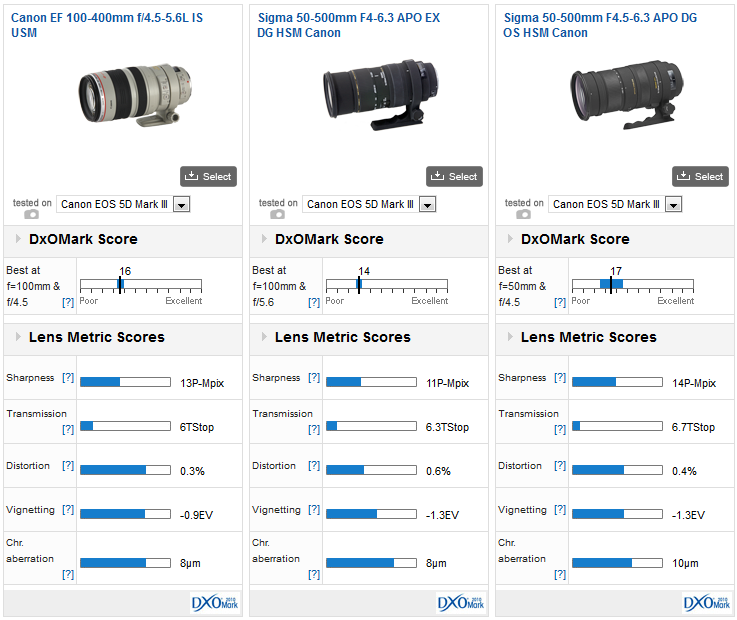
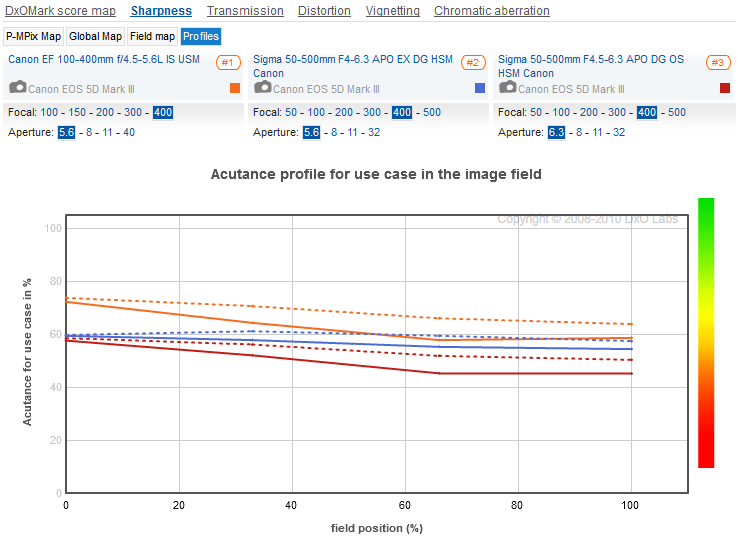
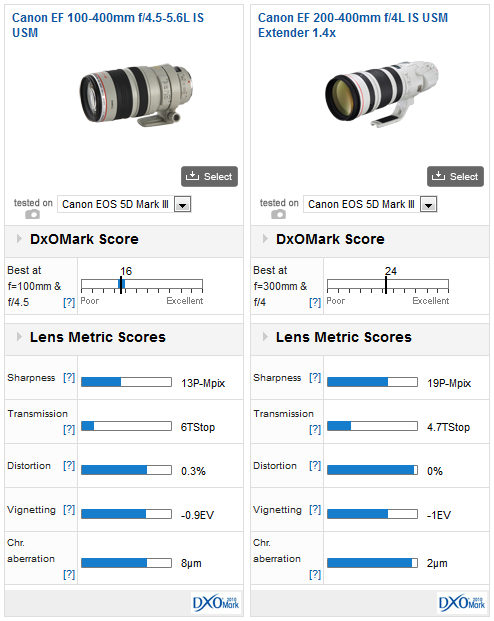
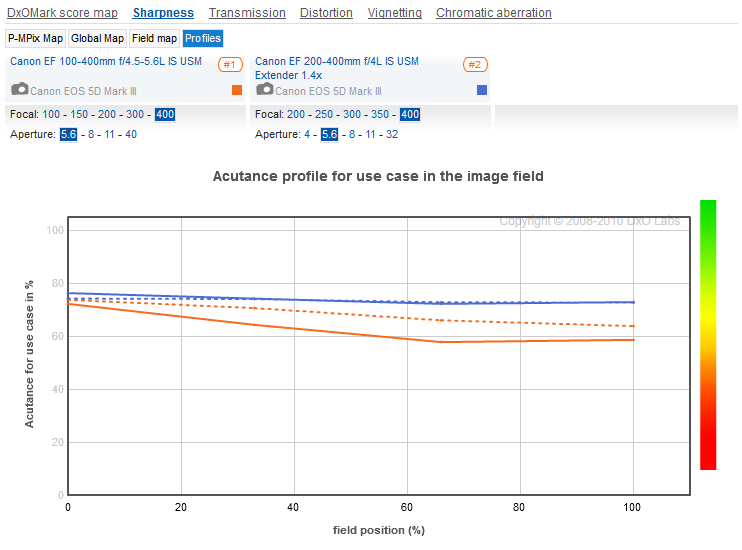
DXOMARK encourages its readers to share comments on the articles. To read or post comments, Disqus cookies are required. Change your Cookies Preferences and read more about our Comment Policy.